
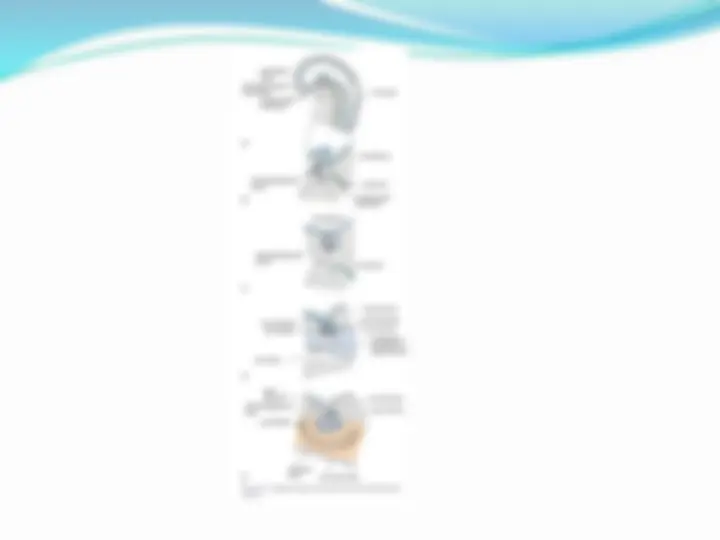
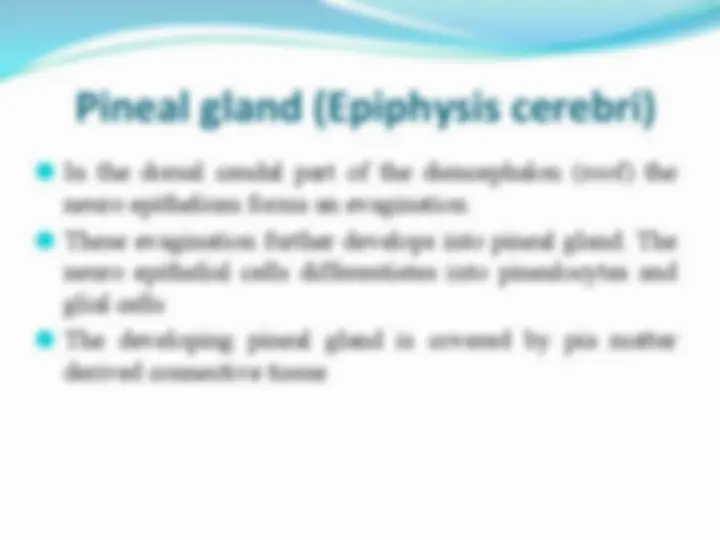
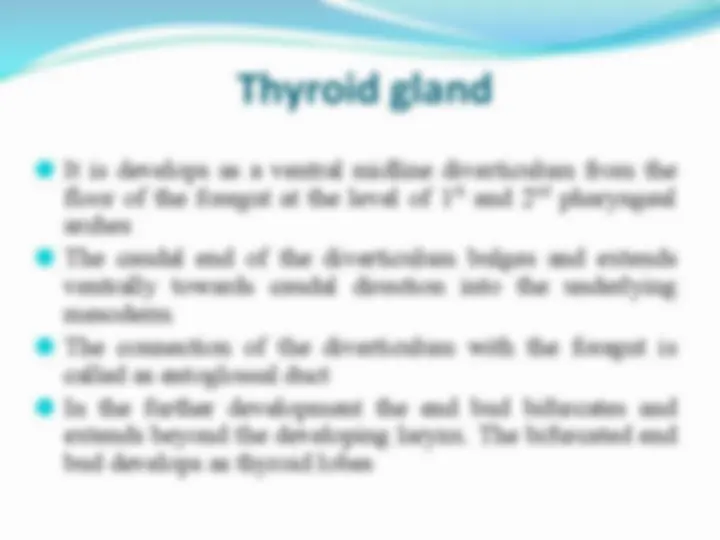
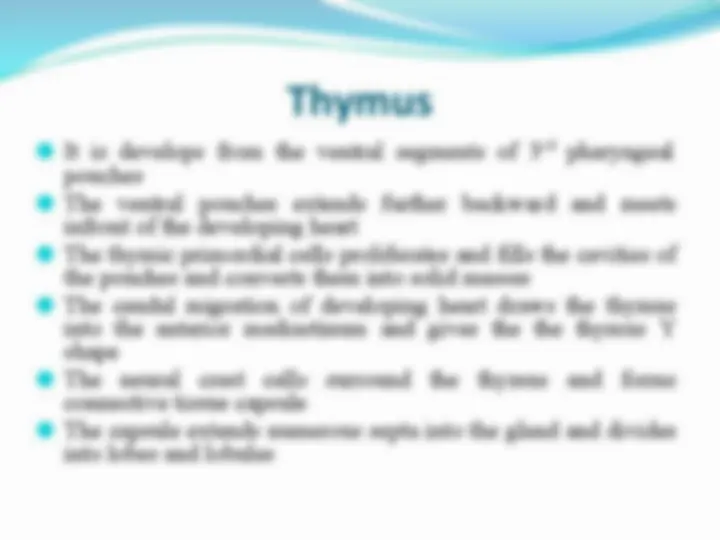
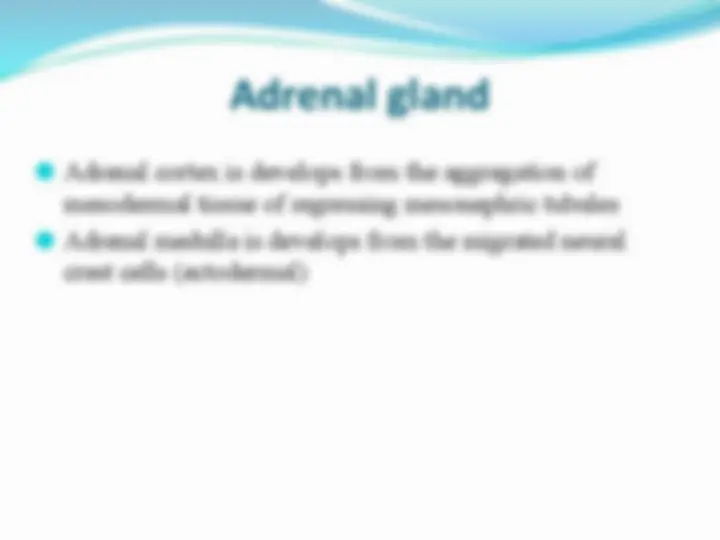
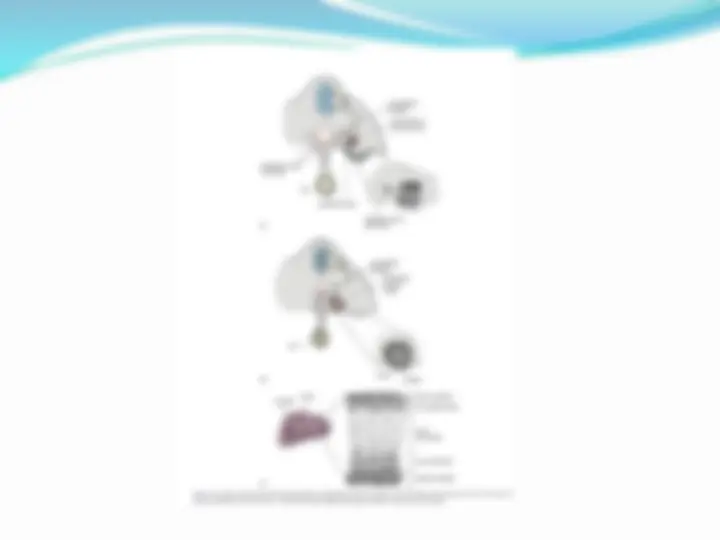


Study with the several resources on Docsity

Earn points by helping other students or get them with a premium plan


Prepare for your exams
Study with the several resources on Docsity

Earn points to download
Earn points by helping other students or get them with a premium plan
Community
Ask the community for help and clear up your study doubts
Discover the best universities in your country according to Docsity users
Free resources
Download our free guides on studying techniques, anxiety management strategies, and thesis advice from Docsity tutors
Topics like ( bones , development studies, mascle, neurology , reproductive studies, histology, topography of organ, heart, eye, liver , pancreas, nerve supply, block, bood supply ets.... )
Typology: Schemes and Mind Maps
1 / 12

This page cannot be seen from the preview
Don't miss anything!







By- Dr. Satish Kumar Pathak Assistant Professor, Department of Veterinary Anatomy, FVAS, BHU
⚫ In the Dorsal midline of stomodaeum an evagination is develops and extends towards the ventral aspect of diencephalon. This evagination is called as Rathke’s pouch ⚫ The Rathke’s pouch loses its connection with stomodaeum and develops into adenohyphophysis ⚫ From the ventral midline of diencephalon an evagination is develops as an infundibulum and further develops as neurohyphophysis ⚫ The adenohypophysis and neurohyphophysis fused together and is called as pituitary gland (Hypophysis cerebri) ⚫ Adenohypophysis is oral ectoderm derivative and neurohypophysis is neural ectoderm derivative
⚫ In the dorsal caudal part of the diencephalon (roof) the neuro epithelium forms an evagination
⚫ These evagination further develops into pineal gland. The neuro epithelial cells differentiates into pinealocytes and glial cells
⚫ The developing pineal gland is covered by pia matter derived connective tissue
⚫ It is develops as a ventral midline diverticulum from the floor of the foregut at the level of 1 st^ and 2 nd^ pharyngeal arches ⚫ The caudal end of the diverticulum bulges and extends ventrally towards caudal direction into the underlying mesoderm ⚫ The connection of the diverticulum with the foregut is called as entoglossal duct ⚫ In the further development the end bud bifurcates and extends beyond the developing larynx. The bifurcated end bud develops as thyroid lobes
⚫ It is develops from the ventral segments of 3 rd^ pharyngeal pouches ⚫ The ventral pouches extends further backward and meets infront of the developing heart ⚫ The thymic primordial cells proliferates and fills the cavities of the pouches and converts them into solid masses ⚫ The caudal migration of developing heart draws the thymus into the anterior mediastinum and gives the the thymus Y shape ⚫ The neural crest cells surround the thymus and forms connective tissue capsule ⚫ The capsule extends numerous septa into the gland and divides into lobes and lobules
Pancreatic islets
⚫ Within the developing pancreas, clusters of cells bud off the developing exocrine component of the pancreas forming endocrine structures referred to as the pancreatic islets or islets of Langerhans
⚫ Cells within these islets differentiate into particular cell types, each with the capability of producing specific endocrine secretions
⚫ These endocrine cells, which are designated as α‐cells, β‐cells and δ‐cells, produce glucagon, insulin and somatostatin respectively